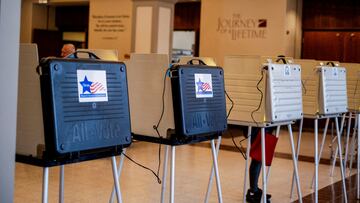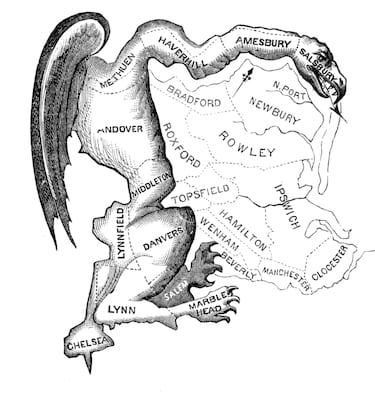What is gerrymandering, the electoral practice that consists of altering electoral districts to obtain more votes in a US Election
‘Gerrymandering’ was coined in 1812, and the practice has grown to such an extent that political representation is severely restricted for many in the US.

The United States prides itself on having free and fair elections and a representative democracy. The saying goes “one person, one vote” but that isn’t necessarily the case, especially when it comes to presidential elections.
Follow AS’s live coverage of Election Day and the count in swing states
- Pennsylvania US Election Results 2024 live
- Wisconsin US Election Results 2024 live
- Georgia US Election Results 2024 live
- Nevada US Election Results 2024 live
- Michigan US Election Results 2024 live
- North Carolina US Election Results 2024 live
- Arizona US Election Results 2024 live
Firstly, there is the Electoral College, whose delegates cast the final vote for who will be president. All but two states are winner-take-all so the candidate who wins a simple majority gets all the Electors even though the vote was basically a 50-50 split. It also means that the votes per elector of populous states are more diluted than that of rural states.
On the other hand, states with larger populations have greater representation in the US Congress. However, every ten years after the census, whichever party is in control of the state legislature gets to draw new congressional district maps as well as those for the state assembly. This opens the door to ‘gerrymandering’.
What is gerrymandering, the electoral practice that consists of altering electoral districts to obtain more votes in a US Election
Since the beginning of the Republic politicians have been doing their best to game the system to their favor at their opponents expense. However, the practice of drawing districts in such a way that it would give one party an extremely lopsided advantage that it would create the term ‘gerrymander’ came in 1812.
That year, Massachusetts Governor Elbridge Gerry signed into law a state senate district map that “consolidated the Federalist Party vote in a few districts and thus gave disproportionate representation to Democratic-Republicans,” states the Encyclopædia Britannica. The Boston Centinel published a political cartoon with of the district map with a monster-like creature superimposed called the “The Gerry-Mander.”

The district maps today have become even more monstrously deformed as the techniques for assuring a lack of competition to maintain a majority in government are ever more sophisticated. The result is that only 14 percent of Congressional Districts of the 435 are competitive after the most recent redrawing of the lines in each state with the results of the 2020 Census, a three-point decrease from before according to the Brennan Center for Justice.
There are two main techniques used when gerrymandering: cracking and packing. The former splits up groups of like-minded voters or ones with similar characteristics to dilute their voting power. Think divide and conquer.
The latter is used to “pack” as many voters from a certain group into a limited number of districts. While they will get their preferred candidates elected, those representatives will have less political power overall. For example, one political party could garner an outsized percentage of the overall vote, but have less representation in the legislature.
Thanks to the fair maps I signed this year, Wisconsinites are no longer voting under some of the most undemocratic, gerrymandered legislative maps in America.
— Governor Tony Evers (@GovEvers) October 28, 2024
Wisconsinites, you have a voice and a vote in this election—make sure you are heard.
Go to ➡️ https://t.co/kQlhd7gzJC pic.twitter.com/Og0w91Nbjr
This was the case in Wisconsin, where Democrats have been out voting Republicans in recent years but Republicans had a stranglehold on the state government and would send more representatives to the US Congress. For example, in 2022, the GOP candidate for governor got just under 48% of the vote, but Republicans had roughly a two-thirds control of both chambers of the legislature after the election.
Related stories
However, after the GOP majority was overturned on the Wisconsin State Supreme Court, the districting maps drawn up after 2020 were found to be unconstitutional. The ruling ordered new maps to be drawn up before the 2024 election. Democrats are hoping for a crack at gaining control of the assembly.
Plain Dealer Endorsement Editorial
— FairDistrictsOhio (@OhFairDistricts) November 3, 2024
Yes on Issue 1, the Citizens Not Politicians redistricting amendment
Passage of Issue 1 will end gerrymandering in Ohio. We emphatically endorse it.
Please vote “yes.”
Future generations will be glad we made this change.https://t.co/z6bcaOsn6T
Gerrymandering is on the ballot in Ohio this year as well. Voters will decide if “the Citizens Not Politicians” will get to draw the redistricting lines and thus end gerrymandering in the Buckeye State.

